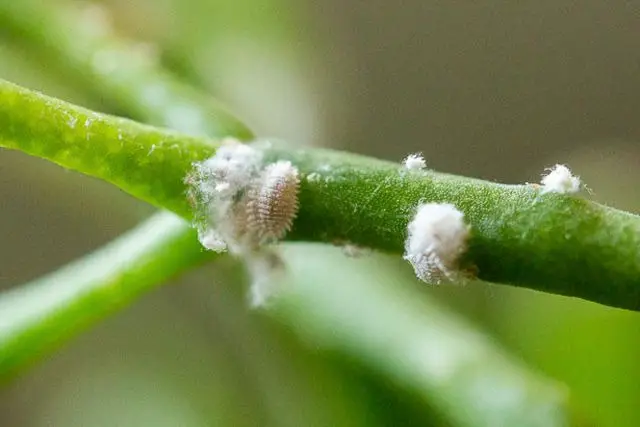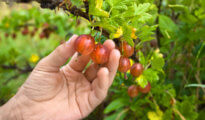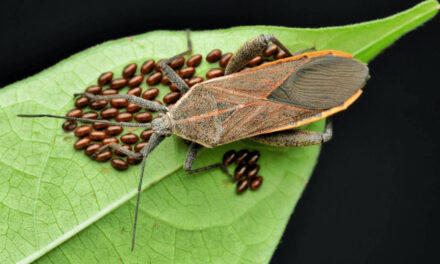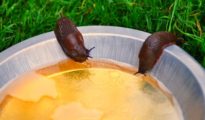Mealybugs are tiny, soft-bodied insects that belong to the family Pseudococcidae. They are pests that can cause significant damage to plants and crops, and they can be difficult to control once they infest an area. In this blog post, we will explore the world of mealybugs, including their physical characteristics, habitat, lifecycle, and behavior, as well as the different methods that can be used to control them.

Physical Characteristics of Mealybugs
Mealybugs are small, oval-shaped insects that range in size from 1/20 to 1/5 inch in length. They have a white, waxy covering that gives them a powdery appearance, which is why they are called mealybugs. The waxy coating also protects them from predators and environmental factors like drying out.
The bodies of mealybugs are segmented, and they have long, waxy filaments that extend from their backs. These filaments are used to secrete the waxy coating and to help the bugs move around. Mealybugs also have piercing-sucking mouthparts that they use to feed on plant sap.
Habitat and Distribution of Mealybugs
Mealybugs are found all over the world and are most commonly found in warm, moist environments. They are often found on indoor and outdoor plants, including fruit trees, ornamental plants, and vegetables. They prefer to feed on new growth, and they can be found in the roots, stems, and leaves of plants.
Mealybugs are also known to infest greenhouses and other indoor growing environments, where they can rapidly reproduce and cause significant damage to crops.
Lifecycle of Mealybugs
Mealybugs have a complex lifecycle that includes several different stages. The female mealybug lays eggs in a cotton-like mass, which can be found on leaves, stems, and other plant surfaces. The eggs hatch into crawlers, which are the first nymphal stage of the mealybug. Crawlers are mobile and will move around the plant until they find a suitable feeding spot.
Once they have found a feeding spot, the crawlers will molt and enter the second nymphal stage. The second nymphal stage is called the “comet” stage, due to the shape of the waxy filaments on their backs. The comet stage is followed by the third and final nymphal stage, which is called the “adult” stage.
Mealybugs can reproduce rapidly, with females producing up to 600 eggs in their lifetime. The entire lifecycle can take as little as three weeks, which means that mealybug populations can explode in a short amount of time.
Behavior of Mealybugs
Mealybugs are primarily known for their feeding behavior, which involves piercing the plant's tissue with their mouthparts and feeding on the sap. This can cause significant damage to the plant, including yellowing and wilting of the leaves, stunted growth, and even death in severe cases.
Mealybugs also produce a sticky, sweet substance called honeydew, which can attract other pests like ants and wasps. The honeydew can also promote the growth of black sooty mold, which can further damage the plant.
Identification of Mealybugs
Identifying mealybugs can be challenging, as they often blend in with the plant they are infesting. However, there are several key signs to look for, including:
- A white, waxy coating on the plant
- Clusters of cotton-like egg masses
- Crawlers moving around the plant
- Yellowing or wilting of the plant
- Presence of honeydew or black sooty mold
Controlling Mealybugs
Controlling mealybugs can be difficult, as they have a rapid lifecycle and can quickly spread to other plants. However, there are several methods that can be used to control mealybugs, including:
- Mechanical Control
One of the simplest ways to control mealybugs is through physical removal. This involves manually removing the insects from the plant using a soft brush or cotton swab dipped in rubbing alcohol. It is important to remove all visible mealybugs, including those on the undersides of leaves and in the plant's crevices.
- Natural Predators
There are several natural predators that can be used to control mealybugs, including ladybugs, lacewings, and parasitic wasps. These predators can be purchased and released in the infested area, where they will feed on the mealybugs and help to control their population.
- Insecticides
Insecticides can be used to control mealybugs, but it is important to choose an insecticide that is effective against mealybugs and safe for the plant and the environment. Insecticidal soaps and oils are often effective against mealybugs and are considered to be safe for use on plants.
- Cultural Control
Cultural control involves modifying the plant's environment to make it less hospitable to mealybugs. This can include improving air circulation, reducing humidity levels, and keeping the plant clean and free of debris.
- Chemical Control
Chemical control involves using pesticides to control mealybugs. This method should only be used as a last resort, as pesticides can be harmful to the environment and can also kill beneficial insects. It is important to choose a pesticide that is effective against mealybugs and safe for use on the plant and the environment.
Mealybugs are a common pest that can cause significant damage to plants and crops. They are difficult to control, but there are several methods that can be used to reduce their population, including mechanical control, natural predators, insecticides, cultural control, and chemical control. It is important to choose a method that is effective against mealybugs and safe for use on the plant and the environment. By taking proactive measures to control mealybugs, it is possible to protect your plants and crops from this destructive pest.



















